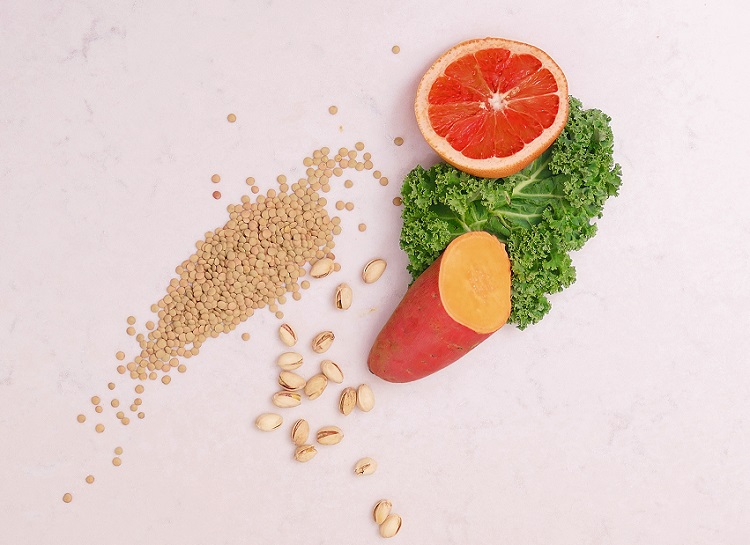Ask the Coaches: What Are The Best Foods For Strong Bones?

-Robert
A: Thanks for your question, Robert! We appreciated the great job Coach Stefanie did to help all of us build up our bone strength along with our muscle strength. It sounds like you’re doing a lot already, including strength and cardio exercise. Incorporating foods for strong bones into your diet is a smart, logical next step.
You don’t have to wait until your bones begin to deteriorate — or worse, suffer from a debilitating fall — to start eating more foods that help support strong, healthy bones. Young or more mature, male or female, you can benefit from the foods below that provide the nutrients your bones need.
Without proper nutrition and regular exercise and physical activity, we can start losing more bone than we’re able to build starting as early as age 25, increasing the risk of weaker bones as we get older. An estimated 80% of folks will have bone and joint problems by the time they reach 65, yet nearly half of them will not have any symptoms. So, taking a preventive approach to building strong bones is smart at any age.
So, let’s get on to the best nutrients and foods for strong bones, shall we?
Foods For Strong Bones
The most well-known nutrients for bone health include calcium and vitamin D, and there are at least two more key players in magnesium and vitamin K. Calcium is the most prominent mineral in the body, and it makes up much of your bones and teeth. The general recommendation for calcium is 1,000 mg per day for adults and 1,200 mg per day for women over 50 and anyone over 70. Unfortunately, although calcium is abundant in numerous foods, most of us don’t get enough calcium to meet our bodies’ needs.1
Calcium Foods for Strong Bones
Good sources of calcium-rich foods for strong bones include:
- Dairy foods (preferably from organic, grass-fed sources), which provide a source of readily absorbable calcium. One cup of milk, for example, provides 27 to 35% of the RDI (recommended daily intake) for calcium, and Parmesan cheese provides 331 mg in 1 ounce. Softer cheeses provide lower amounts, but remember, it does all add up.
- Yogurt (preferably organic) provides 30% of the RDI for calcium; however, it is worth noting that while Greek yogurt is a better source of protein, it also provides less calcium than regular yogurt. Yogurt provides a healthy dose of probiotics, which can help support gut health, and in turn, can help improve the digestion and absorption of the nutrients we eat, including calcium.
- Whey protein, which is one of the two main proteins found in milk, not only provides amino acids, it is also very rich in calcium. A single serving of whey protein provides 200 mg.
- Seeds, including poppy, sesame, celery, and chia, provide not only calcium but protein and healthy fats.
- Canned salmon and sardines provide calcium in large part because of the edible bones. They also provide protein and omega-3 fatty acids.
- Many varieties of beans provide a good amount of calcium, especially white beans, winged beans, and black beans.
- Almonds contain some of the highest levels of calcium of any nuts, and they are also a good source of fiber, healthy fats, and protein.
- Green leafy vegetables, like collard greens and kale, are good sources of calcium. While spinach also provides calcium, it’s high in oxalates, which bind to calcium, making it less available for the body to absorb.
- Amaranth, one of the ancient grains/seeds, is a good source of minerals including calcium, providing 12% of the RDI in one cup.
- Vegetables, like broccoli rabe, broccoli, bok choy, okra, and brussels sprouts, also provide calcium.
Vitamin D Foods for Strong Bones
Vitamin D is another key nutrient for strong, healthy bones as it helps the body absorb calcium. We produce most of the vitamin D we need with adequate levels of sunshine—10 to 15 minutes of sun exposure 3 times a week is what’s typically recommended. Yet many of us don’t produce enough due to indoor jobs, weather patterns, and geographical locations. Fortunately, there are some food sources of vitamin D, including:
- Oily fish like salmon and sardines (which also provide calcium) as well as tuna and mackerel. One serving of salmon (3.5 oz), for example, provides up to 988 IU of vitamin D. Remember to reach for the wild-caught salmon rather than farmed, which provides far less vitamin D (up to 25% less) as well as potential contamination. Don’t overlook canned tuna either as it can provide up to 236 IU of vitamin D and is a healthy source of niacin and vitamin K. Due to potential mercury contamination, however, it is not recommended to be consumed more than once a week.
- Whole eggs (especially the yolks). Pasture-raised chickens, rather than commercial indoor chickens, produce eggs that are 3 to 4 times higher in vitamin D.2 And chickens fed a vitamin-D-enriched diet can provide 10 times the RDI for this vital vitamin.3
- Wild mushrooms are the only plant source of vitamin D as mushrooms, like humans, synthesize vitamin D when exposed to sunlight.4 However, only wild mushrooms and those that are exposed to UV light provide good amounts of vitamin D, and they provide vitamin D2 rather than vitamin D3, which is the form that better raises vitamin D levels in the blood.5
- The majority of the vitamin D in the American diet is found in fortified foods. For example, milk, cheese, breakfast cereals, and some brands of orange juice and other products are fortified with this key vitamin. As these are not necessarily the best choices, you may want to instead consider supplementing with vitamin D.
Other Foods for Strong Bones
While calcium and vitamin D are the most well-known nutrients for bone health, there are other potentially powerful foods for strong bones, including:
- Collagen powders and peptides are rich in amino acids, such as glycine, proline, and hydroxyproline, which nourish our bones and many other connective tissues throughout the body, such as joints, cartilage, ligaments, tendons, and spinal discs (among others). It’s the glue that supports, connects, and holds everything together, including the structures our bones are built upon.6
- Bone broth may help build bones due to its rich source of proline, glycine, vitamins and minerals, and antioxidants along with being one of the few food sources of collagen. Large batches can be made and frozen to add to soups, stews, and sauces for a boost of bone-building nutrition.
- Green tea provides antioxidants known as flavonoids. Interestingly, epidemiological research has indicated green tea may be associated with the prevention of bone loss in elderly men and women due to its role as an antioxidant.7
- Another lesser known nutrient important for bone health is vitamin K,8, 9 which can be found in green vegetables, cheese, and fermented foods. Small amounts are also produced by healthy gut bacteria.
Foods for Strong Bones: A Recap
There is a wide array of foods for strong bones. It’s best to spread out your bone-building nutrition throughout the day, and because of the variety, that shouldn’t be difficult. For example, having eggs and dairy with breakfast, yogurt and seeds for a snack, fatty fish with vegetables and mushrooms for dinner, and enjoying a soothing glass of bone broth or collagen powder mixed in your green tea to finish off the day will take you a long way toward supporting strong, healthy bones, especially when combined with the weight-bearing exercises discussed previously.







